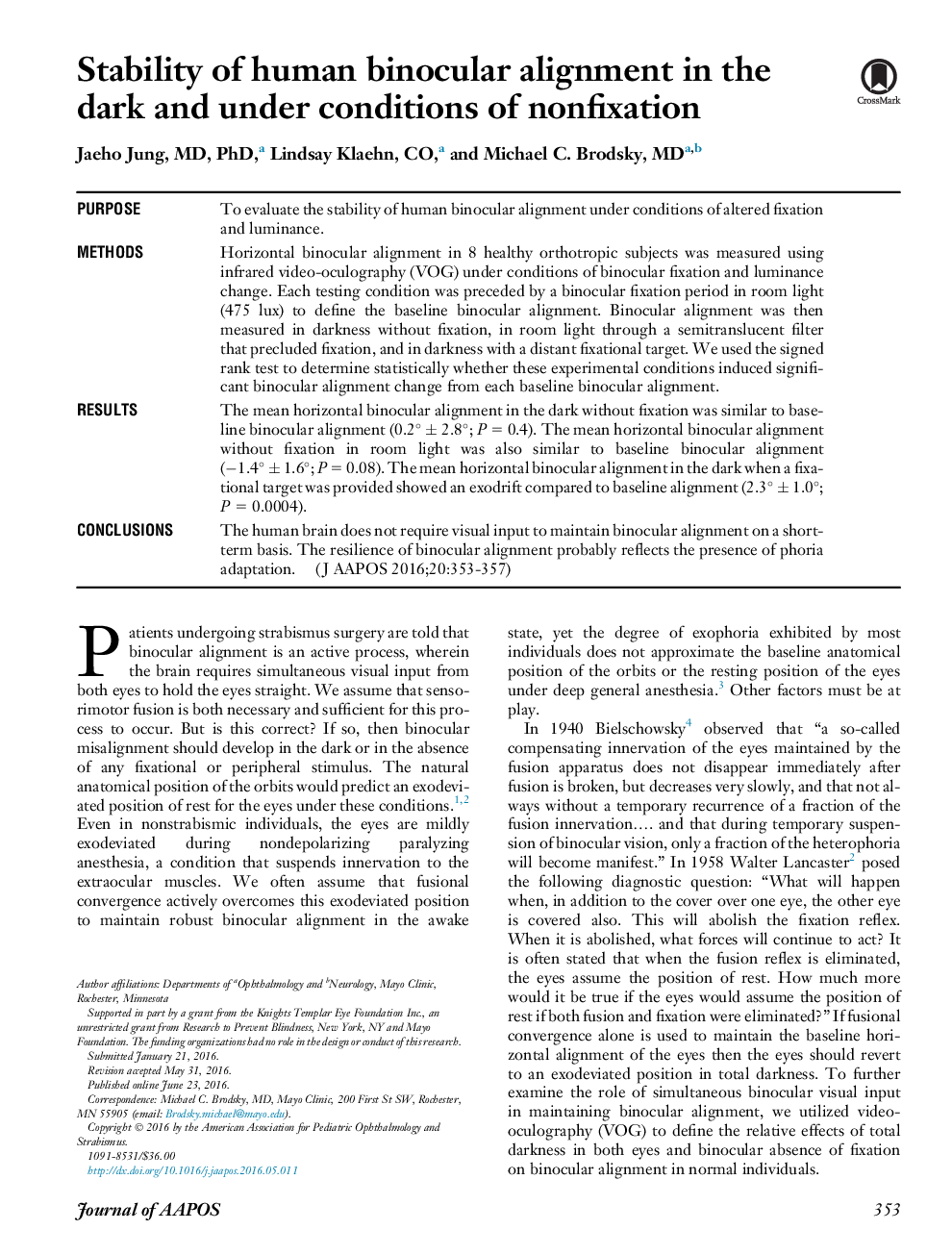| کد مقاله | کد نشریه | سال انتشار | مقاله انگلیسی | نسخه تمام متن |
|---|---|---|---|---|
| 4013230 | 1602733 | 2016 | 5 صفحه PDF | دانلود رایگان |
PurposeTo evaluate the stability of human binocular alignment under conditions of altered fixation and luminance.MethodsHorizontal binocular alignment in 8 healthy orthotropic subjects was measured using infrared video-oculography (VOG) under conditions of binocular fixation and luminance change. Each testing condition was preceded by a binocular fixation period in room light (475 lux) to define the baseline binocular alignment. Binocular alignment was then measured in darkness without fixation, in room light through a semitranslucent filter that precluded fixation, and in darkness with a distant fixational target. We used the signed rank test to determine statistically whether these experimental conditions induced significant binocular alignment change from each baseline binocular alignment.ResultsThe mean horizontal binocular alignment in the dark without fixation was similar to baseline binocular alignment (0.2° ± 2.8°; P = 0.4). The mean horizontal binocular alignment without fixation in room light was also similar to baseline binocular alignment (−1.4° ± 1.6°; P = 0.08). The mean horizontal binocular alignment in the dark when a fixational target was provided showed an exodrift compared to baseline alignment (2.3° ± 1.0°; P = 0.0004).ConclusionsThe human brain does not require visual input to maintain binocular alignment on a short-term basis. The resilience of binocular alignment probably reflects the presence of phoria adaptation.
Journal: Journal of American Association for Pediatric Ophthalmology and Strabismus - Volume 20, Issue 4, August 2016, Pages 353–357
